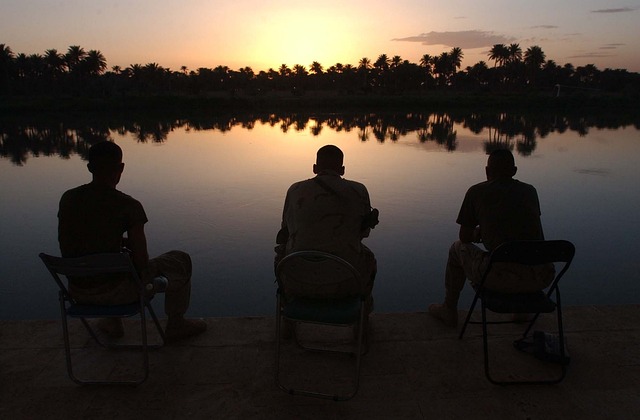Response of McGuire Gibson, Professor Emeritus of Mesopotamian Architecture , University of Chicago, to Iraq’s Climate Crisis: America’s War for Oil and the Great Mesopotamian Dustbowl
Juan: In your devastating post about Iraq’s drought, you could have given more attention to the crucial role of Turkey in flouting international law and damaging Iraq (and Syria) through its illegal capture of the bulk of the water of first the Euphrates and then the Tigris, building very large dams and hundreds of smaller water diversion devices on both rivers.
You might also have mentioned the dams that Iran has built on feeders to the Tigris, especially as they affect the Shatt al-Arab. The building of the Tabqa dam, the Tishrin dam, and other smaller dams in Syria also affected the water supply of Iraq. In the case of the Tabqa Dam, I witnessed personally the kind of disruption such an upstream dam could cause.
In 1974, as Syria began to fill that reservoir (Lake Assad), the water coming down the Euphrates to Iraq was greatly reduced. The Iraqi government made decisions about allocation of the remaining water and, as a result, the Dagharah/Afaq canal, that runs past Nippur (where I was digging at the time), received water only twice a week. This meant that the local farmers did not have enough water to plant and harvest grain, but did have enough for vegetable patches. A local man, who worked for us in the dig house, began to look exhausted and I found out that he was getting up in the middle of the night on those two days to go out and irrigate his fields. He knew that the Syrian dam was causing the problem. I asked him once what would happen if there continued to be tension between Iraq and Syria. He answered: “One will eat the other.”

Image of Euphrates, Iraq by David Mark from Pixabay
Farther south along the canal, the town of Afaq was allotted enough water to survive, but the area farther downstream was not. As a result, 20,000 people (mostly farmers and their families) along that canal were removed and resettled in the rain-fed area north of Baghdad. A couple of years later, when more normal water allocations were resumed, most of the people returned. With the flood of money that resulted from the nationalization of oil, the government took off of the Development Board’s shelves ambitious irrigation plans that had been developed in the 1940s and 50s, based in part on Willcocks’ grand scheme that he created for the Ottomans. To gain some security in water to offset the dams upstream, the Iraqis built dams at Haditha on the Euphrates and at Eski Mosul on the Tigris, and began but did not finish another at the Fatha Gorge.
For the south, the government revived a desalinization project that was designed to flush the salt out of fields and drain the brine into the Third River, which would dump it into a newly created marsh south of Ur and/or into the Gulf. This huge project, designed by an American company and implemented by a Dutch company, was not finished because of the 1958 revolution. When the project was revived in the 1970s, it made great headway, including the cutting of the Third River, but was halted by the beginning of the Iran-Iraq War in 1980. Most important, the key project for the entire country DID see completion–it was meant to offset a situation such as had happened with the filling of the Tabqa. The project connected the Tigris and Euphrates through a deep canal and siphon system just north of Baghdad, making it possible to shift Euphrates water to the Tigris and Tigris water to the Euphrates, as needed.
There was one unfortunate result of this linkage in that, although relief for short-term water crises was assured, there were several years in which too much water was made available and often the canals, including those near Afaq, were running at peak much of the time, allowing farmers to over-irrigate. This resulted in a drastic rise in groundwater, leading to increased salinization of fields. During that period, the marshes grew in size. Gradually, chemicals from agriculture and industry led to increasingly polluted water in Iraq.
By the 1980s, people in the marshes began to say that they tended not to wade in the water because exposure to the water resulted in skin rashes. They noted that fish, frogs, and other animals were showing odd lesions. And they began to witness the diminution of the marshes, as more and more of the water was drawn off and evaporated upstream. In 1988, my last trip to the marshes, the tourist village of Chibayish, where we used to get into boats to see the marshes, was five kilometers from the water.
This had nothing to do with any move by Saddam to drain the marshes, but was just the result of all the extraction upstream, primarily in Turkey. Northern Iraq has had a history of occasional long periods of drought, but the south never had uniform droughts until recently because enough water would come down the rivers to support irrigation, even if reduced.
We know that there were historical periods in which parts of the irrigated zone in the south were abandoned, but other areas still flourished. One of the easily foreseeable results of our current crisis of global warming is the effect of the reduction of snow in the Zagros, which will create massive desertification; we are seeing early effects in the entire system of both rivers, even in Turkey. But the coming disruption in the Tigris-Euphrates basin will appear to be moderate compared to the situation for the billions of people in the countries dependent on the Himalayas.
Mac


 © 2024 All Rights Reserved
© 2024 All Rights Reserved